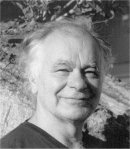

Plenary Lecture
The Cognitive Action Cycle in Artificial Intelligence Guided Control Systems

Professor Wolfgang Baer
Emeritus Professor of Information Sciences, Code IS
Naval Postgraduate School
Monterey, CA
USA
E-mail: Baer@nps.ed
Abstract: The best working hypothesis for Intelligence in humans is represented by a cycle of activity which converts a description of sensory stimulation into memory based models of their physical causes and then uses such models to predict the arrival of expected sensory stimulation. When expectations match actuallyreceived stimulation the cycle stabilizes and thereby contains thebest knowledge of the world that the system can calculate from itssensory experience. This talk will discuss the implementation of suchcognitive feedback cycles in computer systems as a mechanism forimplementing artificial intelligence and compare such implementationswith actual intelligence believed to exist in human beings.The presentation will present the architecture offeedback algorithms and the potential for utilizing our investment inmodels, games, and simulations with real time database updatingalgorithms to close the artificial cognitive activity cycles and buildsubstantially more powerful real-time control systems for use ingeneral field environments. We will discuss the throughput and computepower requirements for a variety of applications and specificallydiscuss the development and experiments conducted at the NavalPostgraduate School for real-time Unmanned Aerial Vehicle imageanalysis and mission control. Advanced topics discussed will include1) the use of dual-eye input devices to perform real-time live virtualimage comparisons to drive terrain database update functions, 2)modeling the real world by running interacting activity cycles incomputer networks, and the developing potential of quantum computersto run parallel feedback loops at speeds that are needed to matchhuman capacities.
Brief Biography of the Speaker: Dr. Wolfgang Baer received his Ph.D. in Physics from theUniversity of California at Berkeley. He worked at Ford Aerospace as amission analyst for meteorological and communication satellites beforestarting a company to develop computer graphics and simulationsoftware. Dr. Baer has run a multi million dollar simulationdevelopment laboratory for the US Army at Ft. Ord California, writtenlarge image and graphics software applications, and directly managedsoftware development teams of seven to ten people to develop realworld modeling applications.Dr. Baer currently holds a research position at the NavalPostgraduate School in Monterey California. Teaching courses innetwork and network programming and quantum information systems. Heis using high speed low cost networked processors to integrate computeintensive real time video realistic battlefield simulation and rapidterrain data base creation algorithms into battlefield knowledgesystems. Dr. Baer is the primary author of the Perspective ViewNascent Technologies (PVNT) software package with which he pursuesunmanned aerial vehicles mission control, cognitive visioninterpretation. His interest in cognitive brain functions has lead toseveral publications exploring the physics of consciousness, realintelligence, and research applications directed toward theextension of cognitive brain capability beyond its normal limits. Hislatest research in Dual-Eye Input systems addresses the question, "Why are we wasting two eyes on one computer screen?".